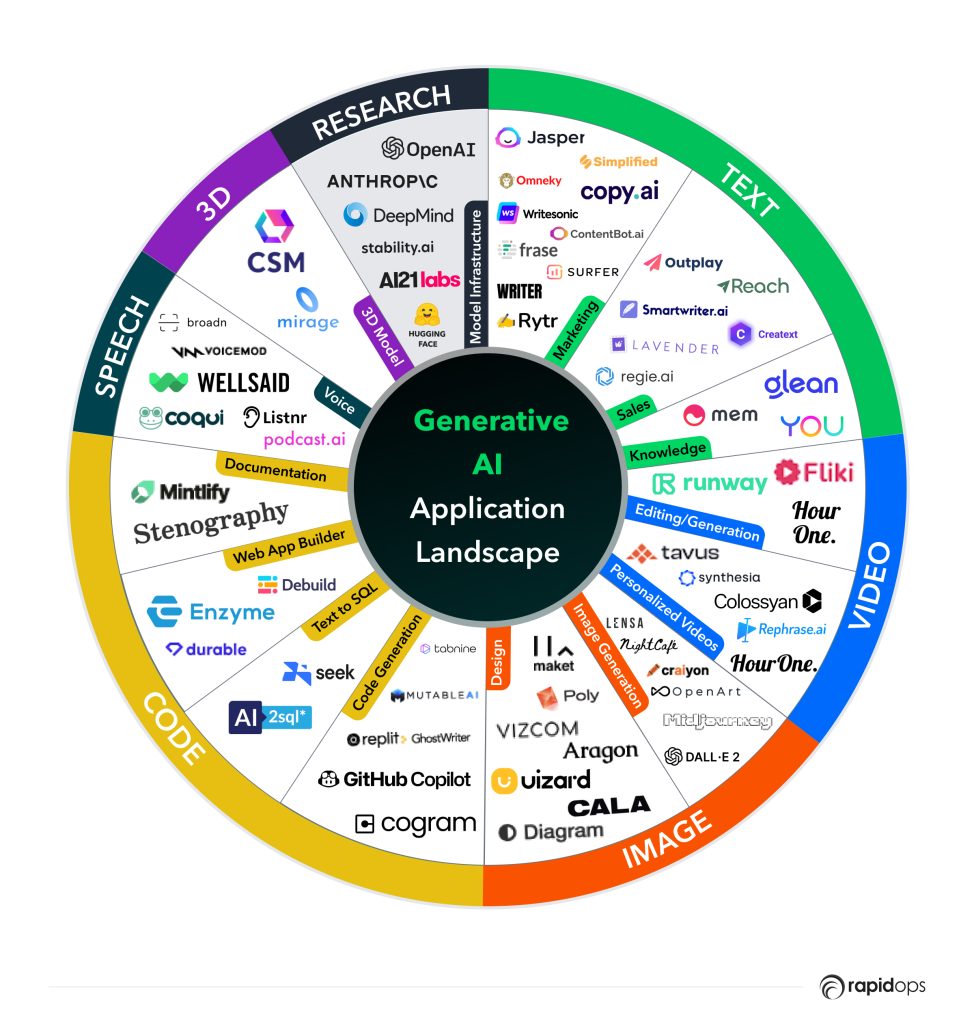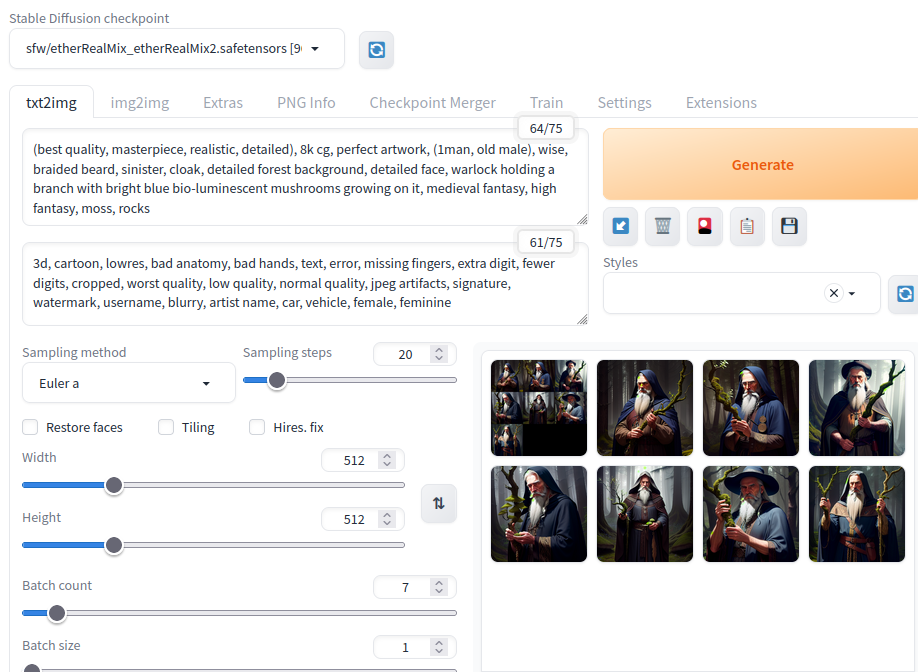Issue 126
Term 3 2023
Empowering school library staff to navigate the AI frontier
Dr Kay Oddone on the rapidly evolving AI landscape and how you can be ready to work with AI in your school library.

The field of artificial intelligence (AI) has received unprecedented attention throughout the world in the past year, instigated by the launch of ChatGPT in late 2022. While research on how AI might be used in education has been conducted since the 1970s (Bozkurt et al., 2021), there has been a sharp realisation that AI technologies have reached a point in their development where they are influencing many facets of life. This has led to the need for educators to become ‘AI ready’ – able to teach about and with AI technology (Luckin et al., 2022).
This article addresses this realisation by firstly presenting a brief discussion about generative AI technology, before considering what it means for educators (and particularly school library staff) to be AI ready. It concludes with an evaluation of three generative AI tools that may be used in learning and teaching – QuillBot AI, Perplexity AI and ChatGPT. This article will have relevance for all educators but is particularly focused on how team leaders and school library staff might take a leadership role in schools in responding to AI technologies, by developing their own knowledge and building on skills they already possess as educators and information specialists.
What is generative AI?
As its name suggests, generative AI (GAI) has the focused task of generating new content, including text, images or music (Forsyth, 2022). This content is created in response to human input in the form of ‘prompts’ – statements describing the desired output. The most well-known example of GAI, ChatGPT, derives its name from its architecture, which is a generative pre-trained transformer (GPT) – a type of large language model (Larsen & Narayan, 2023). Large language models are trained on vast amounts of text-based data, drawn from freely available internet resources. The most recent version of ChatGPT, GPT4, is also able to respond to visual prompts, such as photos or diagrams. GAI is also present in tools that create content other than text; well-known image generators include Stable Diffusion and Midjourney, while Synthesia generates video avatars, and AIMI and Jukebox generate original music. Figure 1 indicates just some of the tools in the GAI landscape. Research indicates that the capabilities of these models are limited only by the resources, including data and computing power, that are available to them, and so they are likely to continue to improve for the foreseeable future (Bowman, 2023).
Becoming AI ready
To become AI ready, it is necessary to have a foundational understanding of the AI landscape and the implications of its use (Luckin et al., 2022). This understanding does not require advanced computational skills and knowledge, but does involve a competent grasp of the underlying concepts and principles along which AI operates, to enable informed analysis of the ethical implications, positive outcomes and potential harms these tools present (Luckin et al., 2022; Southgate et al., 2018). Having this baseline knowledge will allow school library staff to meaningfully contribute to important discussions considering questions such as: ‘How might this evolving technology impact not just single lessons or assessment tasks, but teaching and learning in general?’; ‘How do we prepare our students (and fellow teachers) to use AI technologies in an informed and balanced way?’; and ‘What are our responsibilities as educators to build both students’ skills in using AI technologies as well as students’ capacities to solve problems and think deeply and critically without AI technologies?’.
For team leaders and school library staff, leading learning and teaching about AI involves the consideration of the big picture implications of these technologies. This includes the need for an increased focus on developing algorithmic literacy, raising awareness of the ethical implications of AI, and engagement with critical evaluation of the selection and implementation of technologies which draw upon AI capabilities. Although the continued expansion of AI tools appears inevitable, the impact of these tools on the information landscape and beyond demands that team leaders and school library staff play an active role in challenging their wholesale acceptance (Fister & Head, 2023).
In addition to teaching about AI, there are many opportunities for school library staff to take an active role in teaching with AI. While in some cases this may mean developing student learning opportunities directly using AI technologies, teaching with AI can also involve using AI as a teaching tool. Many of the skills needed to successfully use GAI are dependent upon foundational information literacy knowledge that school library staff have experience and expertise in teaching. One of the clearest examples of this is the evolution of prompt engineering, or the design of the text inputs required by most GAI to generate content. The crafting of explicit and detailed prompts to achieve an output which aligns to the user’s goals requires proficiency in determining the most appropriate key words, inclusion and exclusion parameters, and descriptors that determine the genre, tone and complexity of the output required. Figure 2 depicts the inclusion and exclusion prompts required by Stable Diffusion to generate a particular image. Designing effective text prompts involves expanding strategies developed for effective searching (Wallbank, 2023) and may be a significant skill that can be taught by school library staff.

Teaching with AI also offers opportunities for school library staff to raise the importance of critical evaluation of online information. As tools such as ChatGPT generate convincing text without providing evidence of its provenance, strategies previously relied upon – such as the ‘CRAAP’ test – are of less value, as these tools focus on features of the text such as currency and authority, which are not necessarily evident in output text. The fact that the text/image/video output is a novel generation based upon unidentified training data also removes the possibility of understanding the purpose of the content, and incidences of bias within generated content are prevalent (Nayyer & Rodriguez, 2022; Raicu, 2023). Therefore, the information literacy strategy of lateral reading must be understood, so that before using generated content, students know they must compare the veracity of that content with a number of other reliable sources (Kozyreva et al., 2023).
Being AI ready involves understanding that AI technologies, and in particular GAI tools, are already in use in a range of applications beyond ChatGPT. Popular writing and research platform QuillBot uses machine learning and natural language understanding as it summarises, paraphrases, corrects grammar and checks for plagiarism (QuillBot, n.d.). Although QuillBot requires users to input their own text, new content is generated through the suggestions it makes to improve or refine the writing. While QuillBot may not provoke as much attention as ChatGPT, questions regarding privacy of student data, the ownership of input text and the accuracy of output summaries should be considered prior to use.
Perplexity AI is another tool which uses GAI in its functions as a conversational search engine (Somoye, 2023). Unlike ChatGPT, Perplexity AI generates text responses that include citations, enabling users to identify original sources. While this is a positive inclusion, users must still be critical of the quality of the source material and consider the reasons those particular sources were selected to formulate the response. Wholesale adoption of any AI-generated content must be discouraged regardless of the specific tool, and school library staff are well qualified to promote this message to students and teachers.
The new frontier of GAI is exciting yet challenging. The breakneck speed with which these technologies are evolving has put the world on notice, and it is impossible to predict the incredible transformations and/or the potential dangers they hold. Becoming AI ready ensures school library staff can stand at the forefront of this significant shift, building upon their existing extensive knowledge and expertise to support the school community. All tools may be used for good or for ill, but taking an informed and proactive approach to AI will ensure greater likelihood of positive outcomes for schools and, in fact, the wider community.
References
Bowman, S. R. (2023). [Pre-print] Eight things to know about large language models. arXiv:2304.00612v1 [cs.CL]. https://doi.org/10.48550/arXiv.2304.00612
Bozkurt, A., Karadeniz, A., Baneres, D., Guerrero-Roldán, A. E., & Rodríguez, M. E. (2021). Artificial intelligence and reflections from educational landscape: A review of AI studies in half a century. Sustainability, 13(2). https://doi.org/10.3390/su13020800
Fister, B., & Head, A. (2023, 4 May). Getting a grip on ChatGPT. Inside Higher Ed. https://www.insidehighered.com/opinion/views/2023/05/04/getting-grip-chatgpt
Forsyth, O. (2022, 20 December). Mapping the generative AI landscape. Antler. https://www.antler.co/blog/generative-ai
Kozyreva, A., Wineburg, S., Lewandowsky, S., & Hertwig, R. (2023). Critical ignoring as a core competence for digital citizens. Current Directions in Psychological Science, 32(1), 81-88. https://doi.org/10.1177/09637214221121570
Larsen, B., & Narayan, J. (2023, 9 January). Generative AI: A game-changer that society and industry need to be ready for. World Economic Forum. https://www.weforum.org/agenda/2023/01/davos23-generative-ai-a-game-changer-industries-and-society-code-developers/
Luckin, R., George, K., & Cukurova, M. (2022). AI for School Teachers. CRC Press.
Nayyer, K., & Rodriguez, M. (2022). Ethical implications of implicit bias in AI: Impact for academic libraries. In S. Hervieux & A. Wheatley (Eds.), The rise of AI: Implications and applications of artificial ontelligence in academic libraries (pp. 165-174). ACRL.
Quillbot. (n.d.). appengine.ai. Retrieved 14 April from https://www.appengine.ai/company/quillbot
Raicu, I. (2023). Can biased humans design biased algorithms that still enhance human flourishing? Internet Ethics Blog, Markkula Center for Applied Ethics. https://www.scu.edu/ethics/internet-ethics-blog/on-biased-humans-and-algorithms
Somoye, F. L. (2023, February 3). What is Perplexity AI and what are its uses? https://www.pcguide.com/apps/perplexity-ai/
Southgate, E., Blackmore, K., Pieschl, S., Grimes, S., Mcguire, J., & Smithers, K. (2018). Artificial intelligence and emerging technologies (virtual, augmented and mixed reality) in schools: A research report. University of Newcastle.
Wallbank, A. J. (2023, 28 April ). Prompt engineering as academic skill: a model for effective ChatGPT interactions. Times Higher Education. https://www.timeshighereducation.com/campus/prompt-engineering-academic-skill-model-effective-chatgpt-interactions
